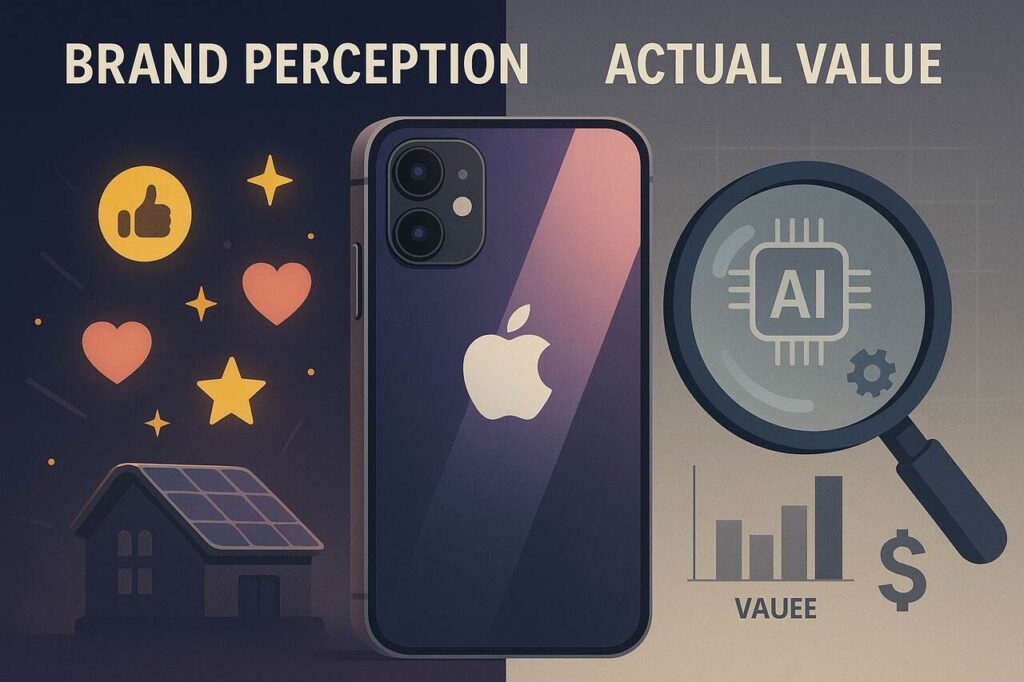Is the iPhone Overrated Compared to Competing Smartphones?
Apple iPhones are often perceived as premium-status devices, but when evaluated through performance benchmarks, feature sets, and price-to-value ratios, many users and analysts argue that iPhones may not fully justify their market dominance. Despite Apple’s iconic brand equity and strong ecosystem lock-in, numerous Android-based competitors offer equal or superior specifications at significantly lower costs, prompting debates on perceived value versus actual utility.
What Drives the Premium Perception of iPhones?
1. Brand Equity and Emotional Loyalty
Apple’s branding strategy reinforces emotional attachment through minimalist design, consistent UX, and high-budget marketing campaigns. Consumer behavior studies indicate that emotional resonance, more than technical performance, sustains Apple’s premium brand perception.
2. Ecosystem Integration and Device Continuity
The Apple ecosystem facilitates seamless integration between iPhones, MacBooks, iPads, and Apple Watches. Features like AirDrop, Universal Clipboard, and iMessage create habitual dependencies, increasing user retention and perceived value, despite potentially lower hardware specifications.
3. Retail and Supply Chain Experience
Apple’s in-store service model, including the Genius Bar and premium packaging, contributes to a luxurious end-to-end customer experience. This experiential marketing strategy amplifies the perceived exclusivity of the product.
4. Social Validation and Cultural Capital
Owning an iPhone has become a status symbol in many cultures. Sociological analysis links iPhone ownership to aspirational branding, particularly in emerging markets where the device symbolizes economic mobility and elite identity.
5. Product Scarcity Psychology
Apple’s controlled product launches and limited early availability leverage scarcity bias, a cognitive bias that inflates perceived value through restricted supply, regardless of functional necessity.
How Does iPhone Hardware Compare with Flagship Android Devices?
1. Processor and Performance Benchmarks
Apple’s A-series chips outperform many Android processors in single-core tasks. However, Snapdragon and Tensor chipsets now offer competitive multi-thread performance, AI optimization, and energy efficiency, narrowing the performance gap.
2. Camera Hardware and Computational Photography
While iPhones excel in video stabilization and color science, Android competitors like the Google Pixel and Samsung Galaxy Ultra integrate superior zoom capabilities, higher megapixel sensors, and advanced machine-learning image processing.
3. Display Quality and Refresh Rate
OLED displays from Samsung and OnePlus often feature higher refresh rates (120Hz+) and greater brightness levels compared to standard iPhone panels, especially in non-Pro models.
4. Battery Efficiency and Charging Speed
Most flagship Android devices support faster wired and wireless charging. Brands like Xiaomi and OnePlus offer 80–120W wired charging, significantly outpacing Apple’s 20W limit and slow energy recovery rates.
5. Storage and RAM Configuration
Android phones frequently include expandable storage and higher RAM capacity, leading to better multitasking performance. iPhones, by contrast, rely heavily on software-level RAM optimization to maintain efficiency.
Does the iPhone Justify Its Price Tag?
1. Cost-to-Feature Ratio
iPhones offer fewer hardware innovations per price point when compared to similarly priced Android models. Key differentiators such as periscope cameras or under-display fingerprint scanners are often absent.
2. Software Longevity and Update Support
Apple leads in OS update longevity, supporting older devices for up to 5–6 years. Android manufacturers, with rare exceptions like Google and Samsung, offer shorter update lifecycles, slightly offsetting the iPhone’s high cost.
3. Repairability and Repair Costs
Apple’s devices score low on the repairability index due to proprietary screws, glue-heavy designs, and software locks. High repair costs further increase total cost of ownership over time.
4. Resale Value and Depreciation Rate
iPhones maintain a higher resale value than Android phones. However, this retained value partially stems from artificial scarcity and brand prestige rather than inherent technological superiority.
5. Geographical Price Variability
iPhone pricing varies drastically by region, often due to import tariffs and currency fluctuations. Consumers in countries like Brazil or India pay a significantly higher percentage of income for an iPhone than users in the U.S., altering the perceived value.
Why Do Many Users Still Prefer iPhones?
1. Ease of Use and Familiarity
The iOS interface offers consistency and intuitiveness across generations. Many users cite comfort, habit, and low learning curve as reasons for brand loyalty rather than hardware innovation.
2. App Quality and Developer Prioritization
Developers often optimize apps first for iOS due to higher monetization potential and unified hardware, resulting in better app performance and faster updates compared to fragmented Android systems.
3. Privacy-Centric Marketing
Apple emphasizes privacy controls such as App Tracking Transparency (ATT), which appeals to users wary of data exploitation. While Android has made strides, Apple still leads in privacy perception.
4. Customer Support Infrastructure
Apple’s customer service network, including in-store support and extended warranty programs like AppleCare, ensures higher post-purchase satisfaction, indirectly reinforcing brand preference.
5. Synchronized Product Ecosystem
Users heavily invested in Apple’s ecosystem (e.g., iCloud, HomeKit, Apple Music) experience high switching costs. Even when hardware value declines, ecosystem synergy encourages continued iPhone use.
Conclusion
From a strictly utilitarian standpoint, many Android smartphones surpass iPhones in raw specifications, price competitiveness, and technological innovation. However, Apple leverages brand psychology, ecosystem cohesion, and software longevity to sustain user preference and loyalty. The question of being “overrated” hinges on user intent those seeking raw power and customization may find iPhones underwhelming, while users valuing seamless integration, privacy, and brand continuity perceive high justification for their purchase. For more informative articles related to News you can visit News Category of our Blog.


